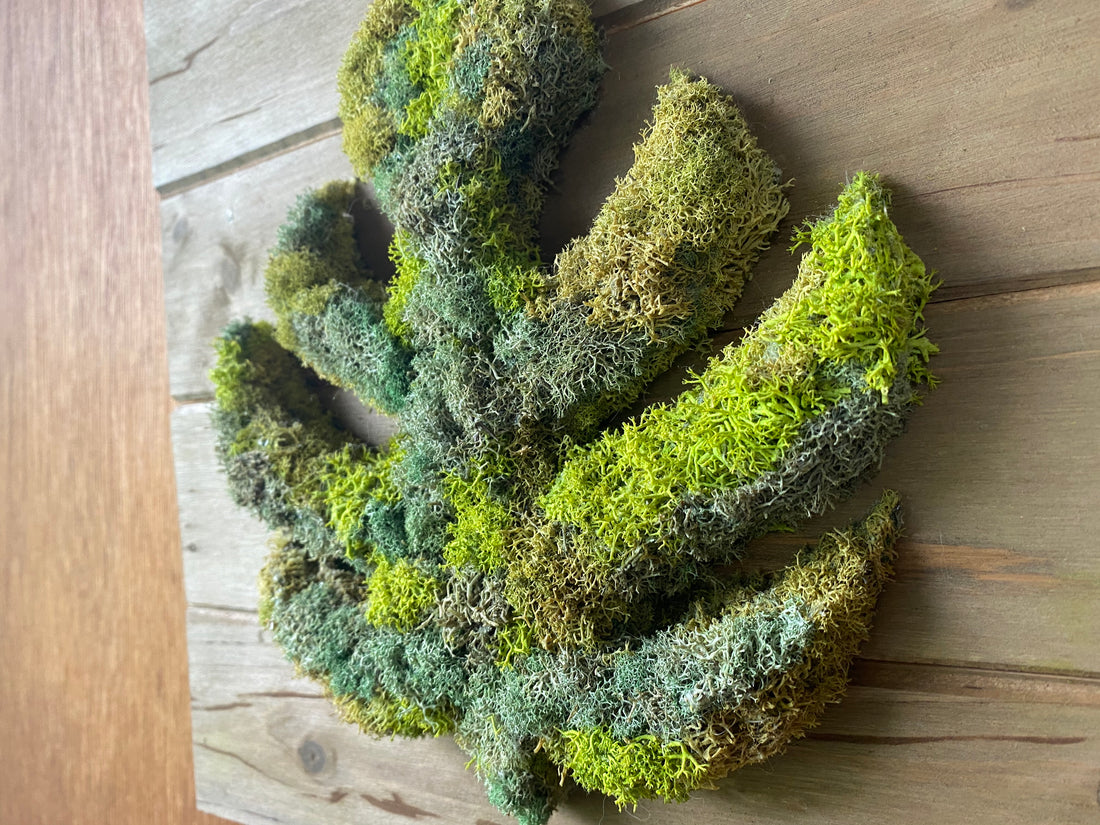
Design Tips
How-To DIY a Preserved Moss Wall
Add greenery to your space without maintenance or care by creating a preserved moss wall. The colors and textures of the moss wall can bring biophilic design into any space.

Looking to add greenery to your space without the maintenance? Creating a preserved moss wall is the perfect solution for anyone looking to fill out blank wall space with no upkeep. The colors and textures of the moss wall can bring biophilic design into any space.
Our plant expert and workshop host Paris shares how-to DIY a preserved moss wall at home below.
Not a crafter? Our friends Artisan Moss make handcrafted, one-of-a-kind preserved living walls. A combination of moss and ferns preserved in their prime, there is no upkeep necessary—simply hang and enjoy.
What is preserved moss?
Mosses are small, non-vascular plants found in damp or shady areas in nature. Preserved moss is real moss collected and treated with non-toxic ingredients like vegetable glycerin that helps to preserve them and remove water content. Natural food colorings are then used to help retain vibrant colors of the moss since colors can fade during the preservation process. Preserved moss is no longer living so it won’t continue to grow, nor does it require any maintenance or sunlight. It also doesn’t collect dust like living plants that are statically charged to attract it so no need to get the duster out!
What can be used as the frame and foundation?
There are many options to what you can use as your frame for your moss wall. You can DIY your own frame using reclaimed wood or plywood cut to your desired shape and size. You can also use an empty frame that already has a backing where the moss can be adhered to, or already made wood plaques found at most craft stores.
What kind of glue is best to use?
Hot glue is easy to use and fast-drying which can make for a good adhesive to use for this type of project. However, for a more clean, seamless process liquid nails project adhesive can be used instead to prevent any long dry strands of hot glue lingering on your piece once it’s complete (which can be a pain to remove). Be sure if you don’t use hot glue you allow your piece to dry for at least 24 hours before hanging.
Materials You’ll Need
- Empty frame with back, framed cork board, wood plaque like this or this, or plywood cut to desired size (you can also nail/staple plywood to the back of an empty frame)
- Adhesive (hot glue or liquid nails project adhesive)
- Different varieties of preserved moss (sheet moss, mood moss, reindeer moss, pole moss, or mixed moss)
- Preserved branches and leaves (optional)
Design Tips & Ideas
- Play with different textures, colors, and sizes of preserved moss
- Use a frame that's a fun shape, letter, or even logo
- Other preserved foliage and branches can be applied to your design to add additional natural elements and texture
- Spanish moss is a great trailing moss that can be added to create dimension; you can even try it trailing out of the frame for a natural look
*Links are to provide a visual example; we encourage you to grab what materials you'd like to work with from your go-to craft store.
Time to DIY
- First, plan your design and arrangement on how you want the final piece to look. You can place the moss on the frame prior to adhering to help gain a better idea of the final product.
- From there, you can start in sections or start with distinctive designs and apply the adhesive to the board.
- Place moss on top of adhesive and press down. If using hot glue you can apply it to the board or directly onto the back of the moss. Repeat until the frame is complete.
- Once the piece is dried (wait 24 hours), double check for lifting and apply more adhesive where needed.
- Hang your preserved moss wall in an area where it will be out of direct sunlight as that can cause colors to fade. Enjoy!

Words By The Sill
Empowering all people to be plant people—a collection of articles from The Sill's team of plant experts across a variety of plant care topics to inspire confidence in the next generation of plant parents. Welcome to Plant Parenthood™.
Do Some Plant Shopping